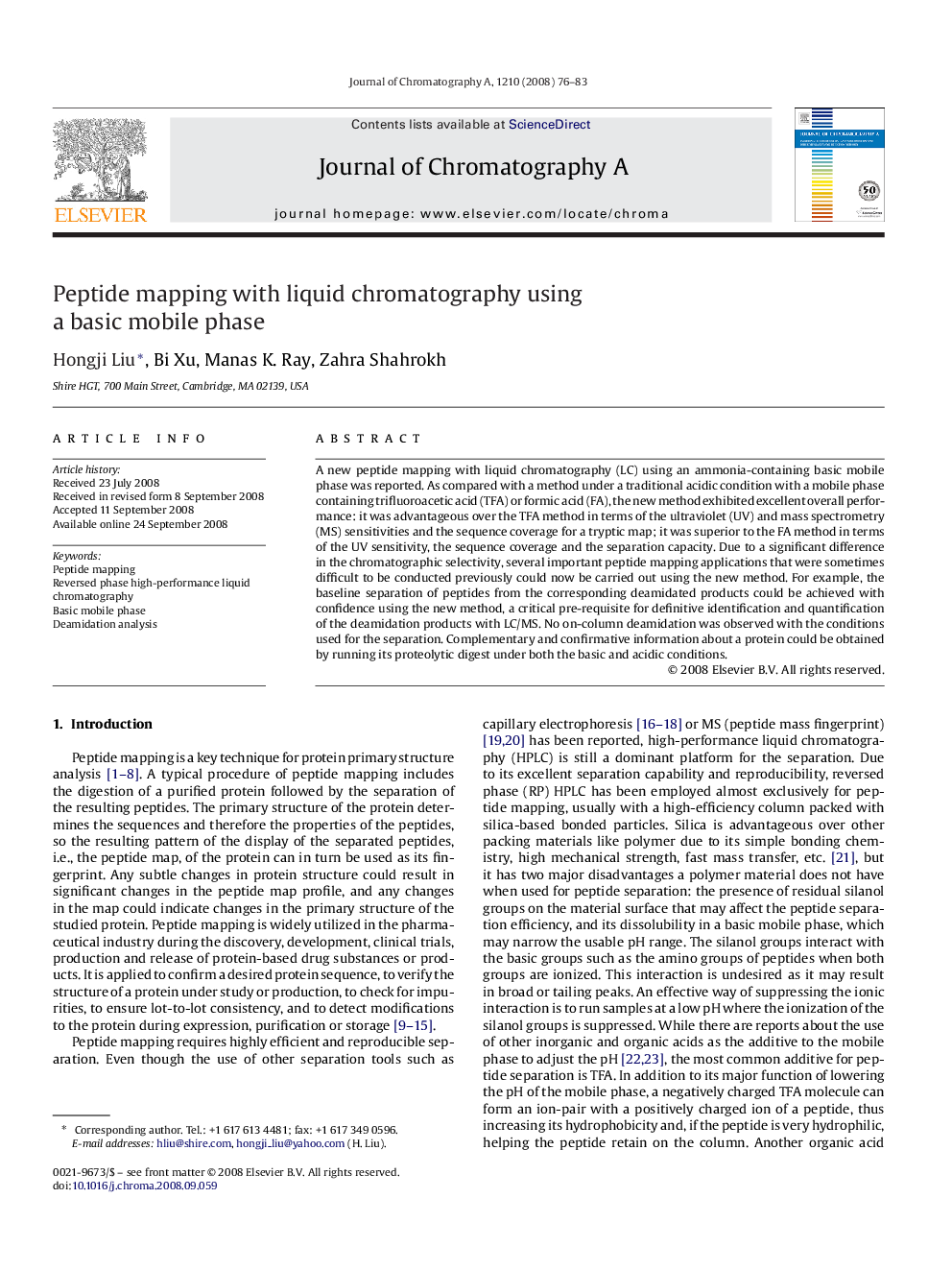| Article ID | Journal | Published Year | Pages | File Type |
|---|---|---|---|---|
| 1210815 | Journal of Chromatography A | 2008 | 8 Pages |
A new peptide mapping with liquid chromatography (LC) using an ammonia-containing basic mobile phase was reported. As compared with a method under a traditional acidic condition with a mobile phase containing trifluoroacetic acid (TFA) or formic acid (FA), the new method exhibited excellent overall performance: it was advantageous over the TFA method in terms of the ultraviolet (UV) and mass spectrometry (MS) sensitivities and the sequence coverage for a tryptic map; it was superior to the FA method in terms of the UV sensitivity, the sequence coverage and the separation capacity. Due to a significant difference in the chromatographic selectivity, several important peptide mapping applications that were sometimes difficult to be conducted previously could now be carried out using the new method. For example, the baseline separation of peptides from the corresponding deamidated products could be achieved with confidence using the new method, a critical pre-requisite for definitive identification and quantification of the deamidation products with LC/MS. No on-column deamidation was observed with the conditions used for the separation. Complementary and confirmative information about a protein could be obtained by running its proteolytic digest under both the basic and acidic conditions.
